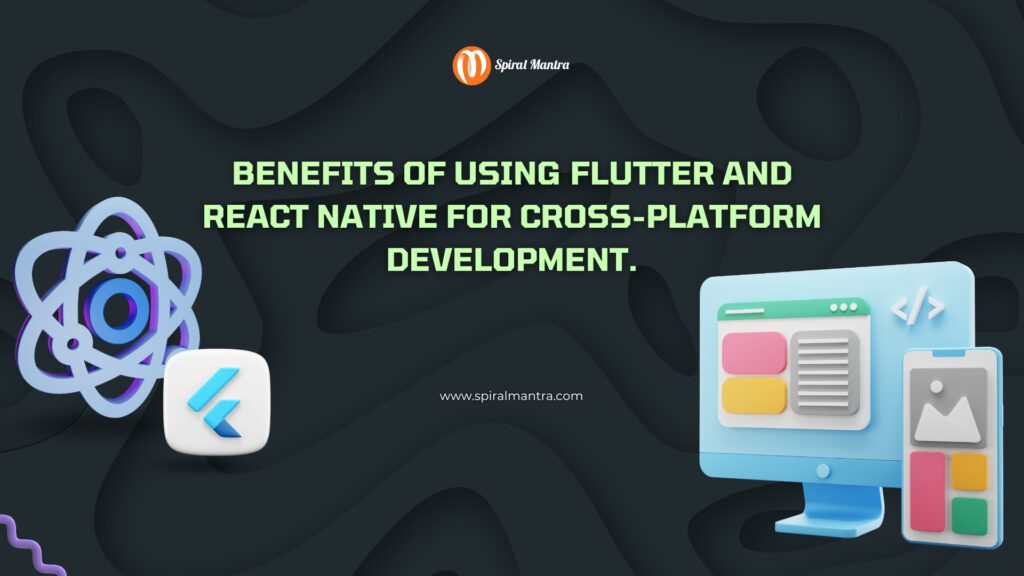Today's fast-growing mobile-driven world makes an app successful when it reaches huge masses of people. To increase the reach, the development of distinct apps for iOS and Android is required, which takes a lot of time and resources. To overcome the above barrier we can use cross-platform frameworks like React Native and Flutter.
The greatest of all worlds—native performance and user experience combined with cross-platform development efficiency and flexibility—are promised by both Flutter and React Native. However, both have their benefits and drawbacks which a developer needs to consider according to their needs and wants with the project.
What is flutter?
Flutter framework, created by Google, helps create quick, eye-catching apps for iOS, Android, the Web, and Windows. It offers access to all native platform features and UI controls.
Flutter has experienced a surge in both popularity and velocity after its public release in 2017. This framework uses a high-performance rendering engine to draw the widgets on the screen and a declarative method to create the widgets that make up the user interface.
Flutter is written in the expressive and modern language Dart. In addition to supporting object-oriented and functional programming paradigms, Dart is compiled into native machine code and offers sophisticated features like async/await, generics, and null safety.
What is React Native?
React Native was released in 2015, by Meta (facebook), as an open-source project after it had been created. This JavaScript framework helps create real, natively rendered mobile applications for
iOS and
Android. React Native is distinct from React in that it is designed for mobile platforms rather than browsers, but is based on the popular React toolkit for creating user interfaces.
React Native follows the same declarative UI paradigm as React which helps you create your application as a collection of reusable components. These elements are presented as native user interface components that blend in with the aesthetics of each platform. In React Native, for example, a component is equivalent to a UI View on iOS and an Android.view on Android.
By offering cross-platform development efficiency and flexibility together with mobile app performance and user experience, React Native seeks to provide the best of both worlds. You can save time and resources by developing an app with React Native that runs on several platforms from a single codebase. To improve the process of developing apps, you may also benefit from the extensive collection of JavaScript libraries and tools available.
Benefits of using Flutter and React Native
- Same User Interface and Business Logic Across All Platforms: Most cross-platform frameworks allow target platforms to share code. But what makes Flutter and React Native special is that they make it possible to share both the UI and its code. They have an advantage over other frameworks in that regard.
Although it may seem easy, there are complications involved in creating an app that seems native on all platforms using a cross-platform framework. The majority of them depend on rendering platform-specific components, which necessitates a framework widget data synchronization and a platform-specific property mapping layer. That makes development more difficult, particularly when attempting to convert animations into a platform-specific widget call.
- Quick Development because of the "Hot Reload" function: The strong hot reload functionality in Flutter and React Native is a terrific way to accelerate app development. A group of Google engineers created this functionality to increase developer productivity and guarantee that they could make modifications fast.
Hot reloading makes it simple to experiment, create user interfaces, add features, and resolve bugs. It updates the Dart Virtual Machine's (VM) source code files. The frameworks automatically reconstruct the widget tree when the virtual machine updates classes with new versions of fields and functions. With hot reload, developers may view their code modifications instantly; there is only a little wait of less than a second between saving the code and seeing the new version on the same screen.
- An Extensive Range of Rich Widgets: Widgets are the basic building pieces used in the construction of Flutter apps. These can be used to create buttons, text, and user input fields, among other functional and graphical elements of an app.
The Cupertino design cues from Apple and the Material Design principles from Android are followed in the creation of widgets. Customizing the user interface—often the most labor-intensive part of cross-platform development—can be completed quickly and easily with the help of these widgets.
Conclusion
Two well-liked and potent frameworks for creating
cross-platform apps are Flutter and React Native. They can be utilized for various goals and preferences, and each has advantages and disadvantages of their own. Which tool is best depends on the specific requirements and goals of each project; there is no one-size-fits-all answer.
Nonetheless, the following broad principles may assist
developers in selecting between Flutter and React Native:
- Select Flutter if you want to leverage a rendering engine that is quick and efficient, deliver a consistent look and feel across platforms, and work with a fresh and expressive programming language called Dart and a UI framework called Flutter.
- React Native is the better option if you want to take advantage of the extensive and varied JavaScript ecosystem, and harness the well-known and often-used programming language (JavaScript) and UI library (React).
